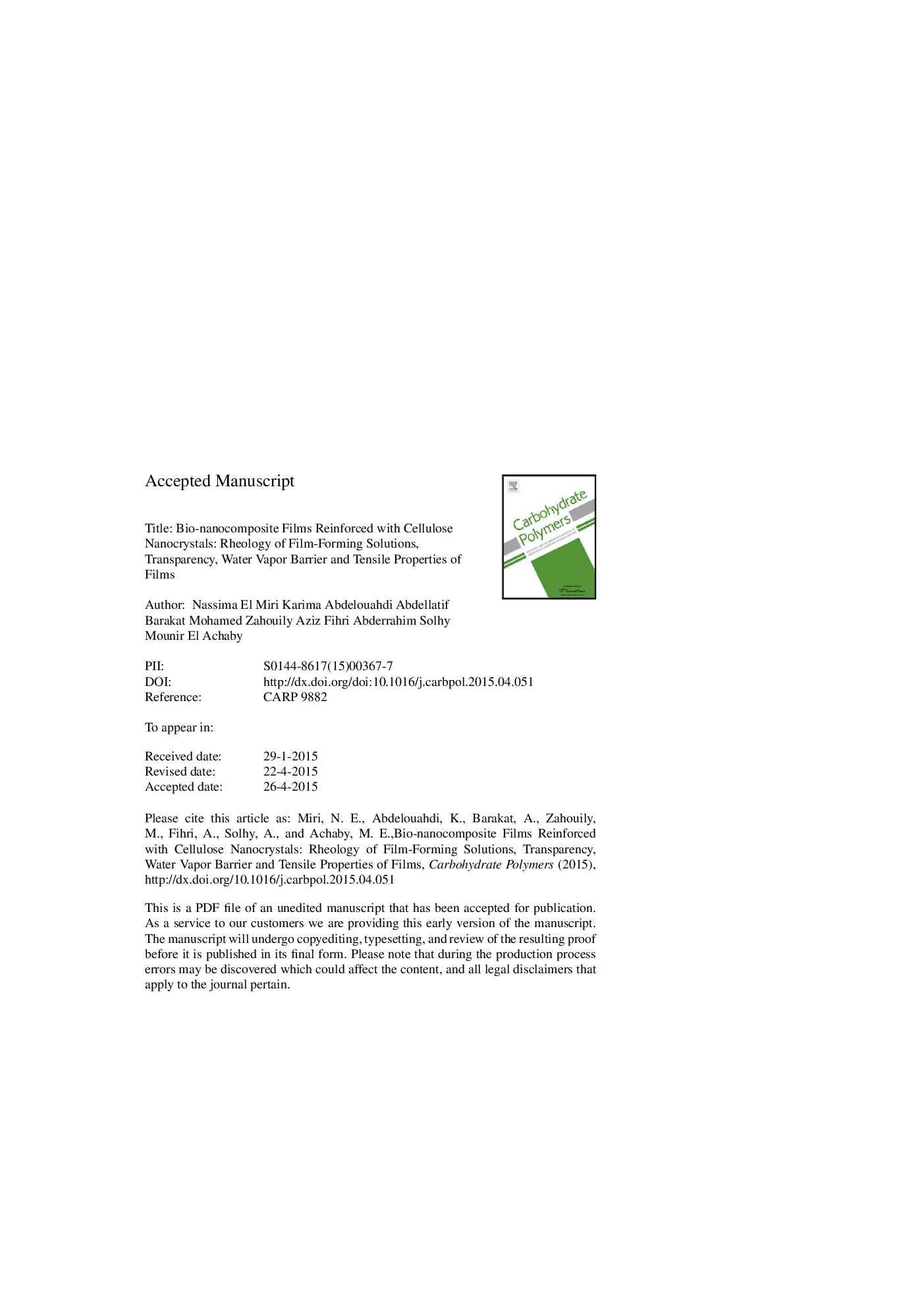| Article ID | Journal | Published Year | Pages | File Type |
|---|---|---|---|---|
| 7788234 | Carbohydrate Polymers | 2015 | 40 Pages |
Abstract
This study was aimed to develop bio-nanocomposite films of carboxymethyl cellulose (CMC)/starch (ST) polysaccharide matrix reinforced with cellulose nanocrystals (CNC) using the solution casting method. The CNC were extracted at the nanometric scale from sugarcane bagasse via sulfuric acid hydrolysis and used as reinforcing phase to produce CMC/ST-CNC bio-nanocomposite films at different CNC loading levels (0.5-5.0Â wt%). Steady shear viscosity and dynamic viscoelastic measurements of film-forming solution (FFS) of neat CMC, CMC/ST blend and CMC/ST-CNC bio-nanocomposites were evaluated. Viscosity measurements revealed that a transition from Newtonian behavior to shear thinning occurred when CNC were added. The dynamic tests confirmed that all FFS have a viscoelastic behavior with an entanglement network structure, induced by the hydrogen bonding. In regard to the cast film quality, the rheological data showed that all FFS were suitable for casting of films at ambient temperature. The effect of CNC addition on the optical transparency, water vapor permeability (WVP) and tensile properties of bio-nanocomposite films was studied. It was found that bio-nanocomposite films remain transparent due to CNC dispersion at the nanoscale. The WVP was significantly reduced and the elastic modulus and tensile strength were increased gradually with the addition of CNC. Herein, the steps to form new eco-friendly bio-nanocomposite films were described by taking advantage of the combination of CMC, ST and CNC. The as-produced films exhibited good optical transparency, reduced WVP and enhanced tensile properties, which are the main properties required for packaging applications.
Keywords
Related Topics
Physical Sciences and Engineering
Chemistry
Organic Chemistry
Authors
Nassima El Miri, Karima Abdelouahdi, Abdellatif Barakat, Mohamed Zahouily, Aziz Fihri, Abderrahim Solhy, Mounir El Achaby,
